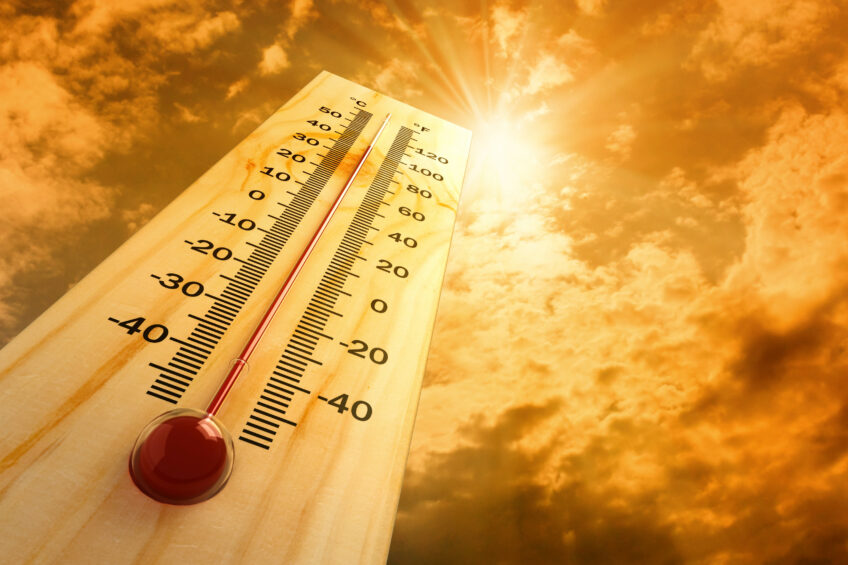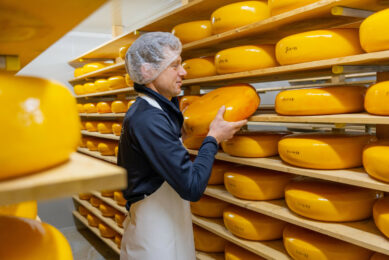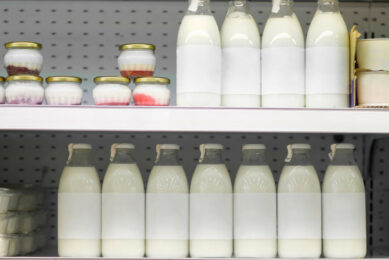Drought hits European dairy farmers

European dairy farmers are suffering one of the worst droughts for decades, which has a knock-on effect on winter fodder supplies.
With temperatures exceeding 30°C and no rain falling for over a month, livestock, crops and grass are suffering. Irrigators are using 10 litres of diesel per hour, for 20 hours a day, 7 days a week, and while the costs of this have to be met by vegetable farmers, livestock farmers say they cannot afford it.
Effect on grass and silage
Pasture based dairy farmers are certainly being hit hard as grass growth is limited and silos are proving hard to fill with low yields on the silage fields. Alexander Anton, Secretary General of the European Dairy Association, says the drought has the making of a ‘crisis scenario.’
Mr Anton said: “The drought in parts of Europe is a problem for the pasture land based systems in these regions today, but, at an EU level, it will make our lives even more complicated in 2019 when we will see feed supply becoming an issue due to the reduced feed production during this summer. If you add to this picture further potential turbulences on the world’s protein trade side, you basically have all the ingredients for a crisis scenario,” he said.
State of emergency in some countries
The combines are in the fields earlier than normal, but that is not such a good sign considering yields are well below normal and in some cases are less than half of what they should be. Nordic countries including Sweden, Finland and Norway have experienced high temperatures with crop yields almost disappearing daily. Even further west, the normally luscious green fields of Northern Ireland and the Republic of Ireland have wilted to a brown colour with water levels so low the governments were forced to ban the use of hose pipes for a few weeks. Lithuania and Latvia declared states of emergency as other countries battled numerous wildfires in forests, grassland and arable crops. News of farm machinery going up in smoke during harvest operations has also been widely reported. Arable crop yields have been hit the hardest with the latest estimates suggesting Germany’s 2018 wheat crop may fall by 6.5% to 22.89 million tonnes. In Poland the wheat crop is expected to fall 6.7% from last year’s harvest to 10.9 million tonnes. In Lithuania the harvest could fall to 3.2 million tonnes from 3.8 million last year while Sweden’s wheat harvest is expected to fall by 15-20% from 2.46 million tonnes.

Crops are being destroyed
Lennart Nilsson, the co-chair of the Swedish Farmers Association, said it was the worst drought he had ever personally experienced. He said: “This is really serious. Most of south-west Sweden hasn’t had rain since the first days of May. A very early harvest has started but yields seem to be the lowest for 25 years, 50% lower, or more in some cases, and it is causing severe losses.”
Farmers in the Netherlands where agriculture is quite intense are also suffering from weeks of high temperatures destroying crops. Even in this country with so many waterways, dykes and sea, farmers cannot afford the irrigation costs with some saying it would be a waste of money. Dairy farmer Sicco Hylkema who farms near Westhem in the Friesland Province of the Netherlands right beside a lake said there was no point in irrigating.
He said: “The ground is so hard right now any water we spray onto the grass will simply run off into the dykes. It would be a huge waste of money on diesel to irrigate the lands. “Some people are comparing this drought to the one in 1976 but it’s my first time farming in such a lack of rain. We just have to wait for rain,” he added.
However, vegetable farmers in the Netherlands are continuing to irrigate in order to salvage any yield to help pay the bills.
Demand for EU assistance
The European Drought Observatory (EDO) has described the drought as “an extensive and severe anomaly” affecting Scandinavia, Scotland, Ireland, the Baltics, the Netherlands and northern Germany. A spokeswoman for the EU’s Joint Research Centre, which oversees the EDO, said farmers should prepare to adapt to a warmer climate with “diversification or change of crop types and varieties, but also a more efficient use of water.” Some countries have asked the European Commission for assistance with the drought related problems. As a response, the Commission decided to temporarily exempt 8 countries, Sweden, Denmark, Estonia, Finland, Latvia, Lithuania, Poland and Portugal, from an EU environmental requirement aimed at promoting biodiversity, which obliges farmers to leave part of their land fallow. This means farmers in those countries can use this non-producing land to grow food for their livestock until the drought ends.
Join 13,000+ subscribers
Subscribe to our newsletter to stay updated about all the need-to-know content in the dairy sector, two times a week.










